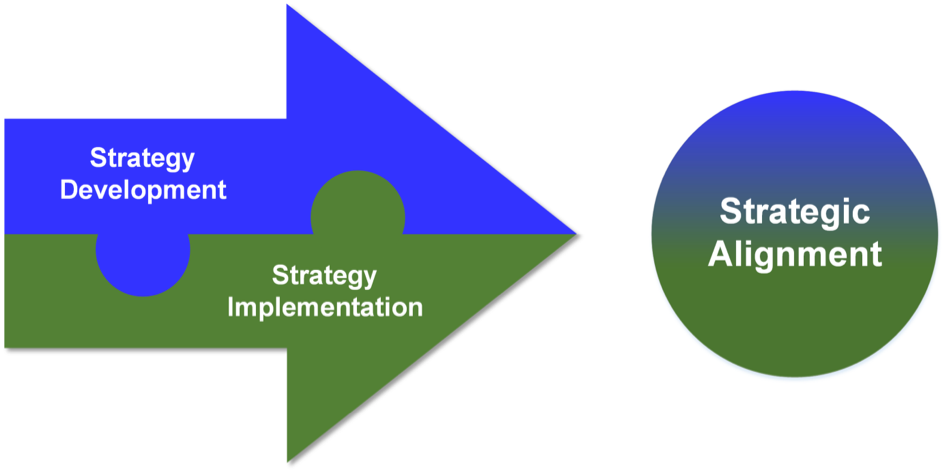Aligning business processes with overarching strategic goals is the cornerstone of achieving sustainable success in today’s fast-paced business environment. This strategic alignment ensures that every department, process, and operation is geared toward achieving the company’s vision, fostering efficiency and adaptability.
Misaligned Business Processes Drain Resources
Many organizations struggle with fragmented operations where departments operate in silos, leading to inefficiencies, duplication of work, and missed opportunities. This lack of alignment often arises from outdated systems, poorly defined workflows, or a disconnect between strategy and execution.
Such misalignment affects key areas like productivity, profitability, and customer satisfaction. When processes aren’t synchronized with the operations strategy, they can inadvertently drain valuable resources, leaving businesses vulnerable to competition.
A Well-Oiled Enterprise Through Strategic Alignment
Imagine a scenario where all business functions seamlessly work together, guided by a cohesive strategy. Strategic alignment of business processes ensures that each process directly contributes to the organization’s overarching goals. This involves adopting enterprise process management practices, leveraging technology, and fostering cross-departmental collaboration.
A well-aligned business delivers measurable benefits:
- Improved operational efficiency
- Enhanced adaptability to market changes
- Stronger customer relationships
- Maximized return on investment (ROI)
Aligning Business Processes with Strategic Goals
Achieving strategic alignment requires a structured approach. Below, we explore actionable steps to streamline business processes, integrate enterprise process management, and strengthen your operations strategy.
1. Define Your Strategic Objectives Clearly
Strategic alignment begins with clarity. Define short-term and long-term objectives for your organization. Identify the key goals that drive your business, such as:
- Reducing operational costs
- Improving customer retention
- Expanding into new markets
Ensure these objectives are measurable, achievable, and communicated across all levels of the organization.
2. Audit and Map Current Business Processes
Before realigning processes, understand how they currently function. Conduct a detailed audit of your workflows:
- Identify redundant or bottleneck processes.
- Map processes across departments to visualize interdependencies.
- Highlight workflows that don’t align with your operations strategy.
A thorough audit provides insights into inefficiencies, guiding you toward areas that need improvement.
3. Adopt Enterprise Process Management for Streamlined Operations
Enterprise process management (EPM) is a systematic approach to analyzing, designing, and optimizing workflows across the organization. It ensures that all processes align with the company’s strategic goals. Key aspects of EPM include:
- Centralized management of processes to avoid silos
- Automation of repetitive tasks to enhance productivity
- Monitoring process performance with real-time analytics
By adopting EPM tools, businesses gain better control over their operations and foster collaboration across teams.
4. Align Operations Strategy with Technology Investments
Technology is a critical enabler of strategic alignment. Invest in tools that align with your operations strategy and improve efficiency. Examples include:
- Workflow automation platforms to reduce manual errors
- Data analytics tools for actionable insights
- Cloud-based collaboration tools for cross-departmental alignment
Implementing the right technology ensures that your business processes are not only aligned but also scalable for future growth.
5. Foster a Culture of Collaboration and Continuous Improvement
Strategic alignment isn’t a one-time effort; it’s an ongoing process. Encourage a culture of collaboration where departments work toward shared goals. Regular feedback loops, employee training, and open communication channels are essential to this process.
Promote continuous improvement by:
- Conducting regular process reviews
- Staying updated on industry trends
- Adapting workflows to evolving market needs
6. Measure Success with Key Performance Indicators (KPIs)
Set specific KPIs to monitor the success of aligned processes. These metrics should reflect both operational and strategic outcomes. Examples of KPIs include:
- Process efficiency rates
- Customer satisfaction scores
- Cost savings achieved through process optimization
By tracking KPIs, you can ensure that your processes remain aligned with strategic goals, allowing for timely adjustments when needed.
Real-Life Example: Strategic Alignment in Action
A mid-sized retail company faced challenges with its supply chain operations, leading to delays in product delivery and dissatisfied customers. By implementing enterprise process management practices and aligning their supply chain processes with their operations strategy, the company achieved:
- A 30% reduction in delivery times
- Enhanced supplier relationships
- Improved customer satisfaction ratings
This example highlights how strategic alignment transforms inefficiencies into opportunities for growth.
Why Strategic Alignment Matters for Long-Term Success
The alignment of business processes with strategic goals is not just about improving efficiency; it’s about creating a cohesive ecosystem where every action contributes to overarching objectives. This alignment drives innovation, boosts employee morale, and positions businesses as market leaders.
Key Takeaways
- Strategic Objectives: Clearly define and communicate your company’s goals to guide process alignment.
- Enterprise Process Management: Adopt EPM practices to centralize and optimize workflows.
- Operations Strategy Integration: Leverage technology and data to enhance operational efficiency.
- Continuous Improvement: Establish a culture of collaboration and adaptability to sustain alignment.
Conclusion: Turning Strategy into Action
Strategic alignment of business processes is essential for businesses to remain competitive and achieve long-term growth. By embracing enterprise process management and integrating an effective operations strategy, organizations can unlock their full potential, driving operational excellence and achieving their strategic vision.
For businesses ready to take the next step, now is the time to evaluate and realign your processes to thrive in a dynamic market.
